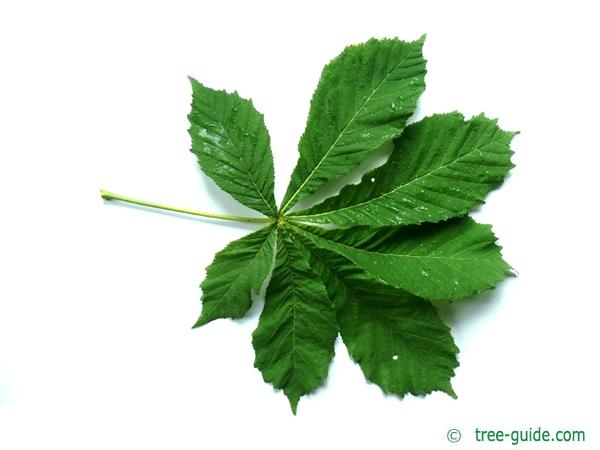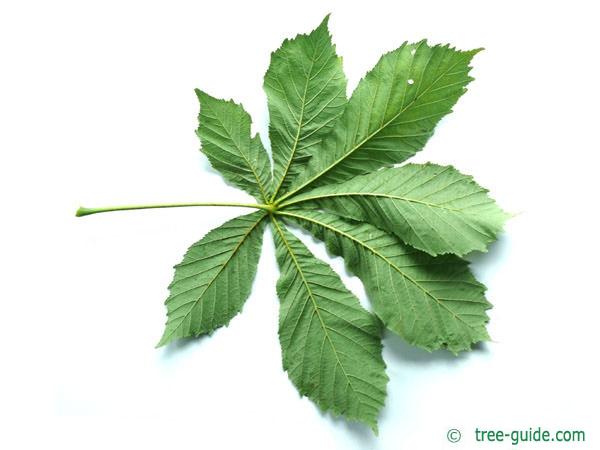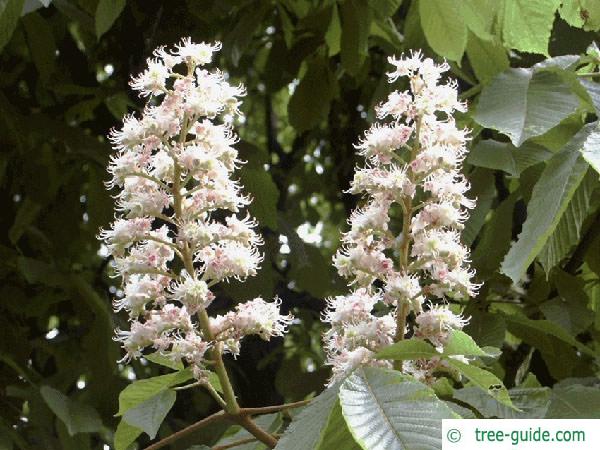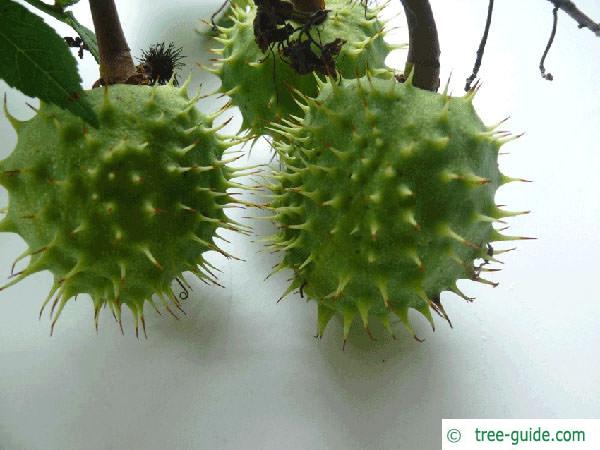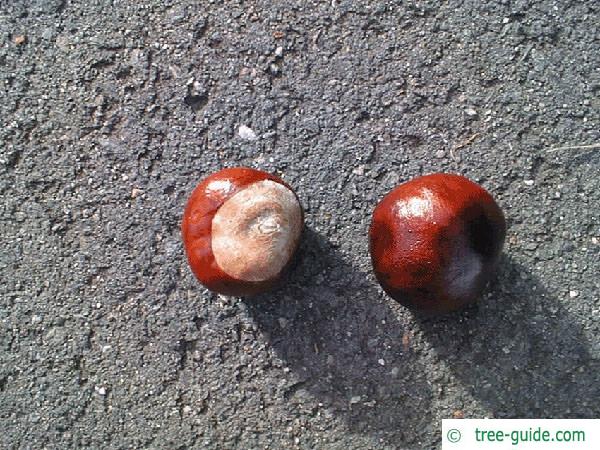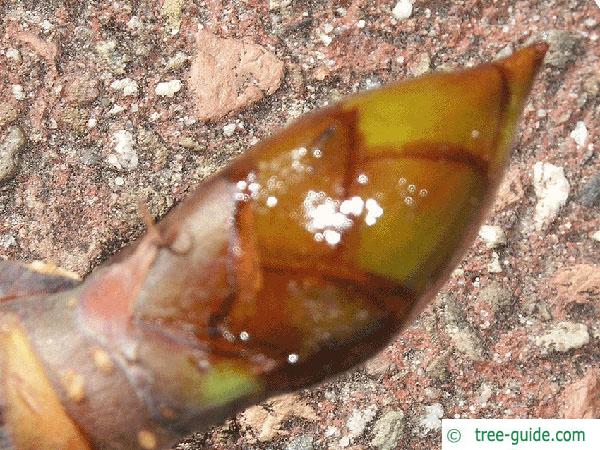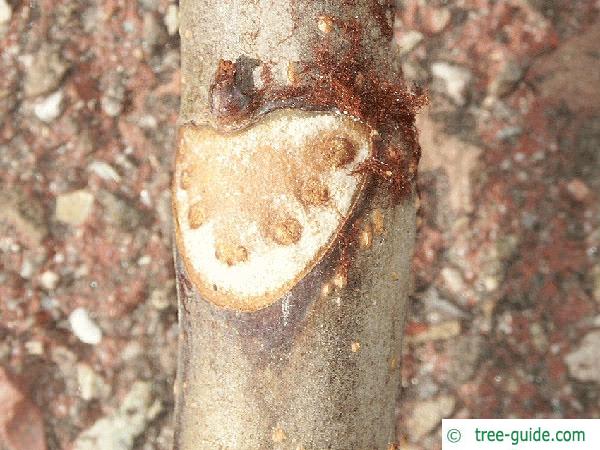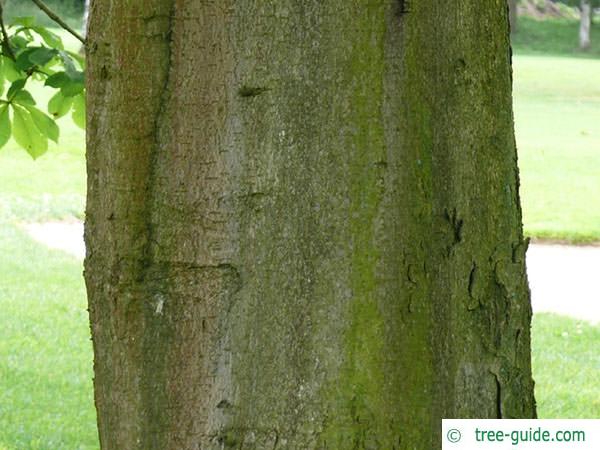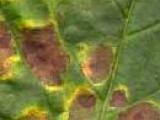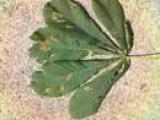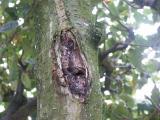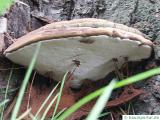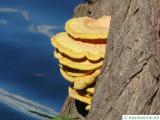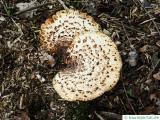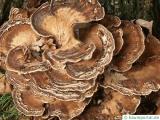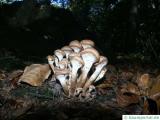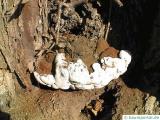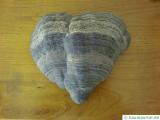Basisdaten
The Horse chestnut (buckeye) is a deciduous tree is originally from the Balkans and is widespread in Central Europe. The chestnut tree can grow up to 25 meters high. It has a broad, spreading crown. The crown base is often very low, so that the chestnut is well suited as a climbing tree. The chestnut is often used as a single tree and street tree. The red-flowering chestnut is more suitable as a street tree because it forms only a few fruits.
Description Chestnut / Horse chestnut
Growth
The horse chestnut can grow up to 25 meters (85 ft) high. It has a broad and spreading crown with a low crown base.
Buds
The buds of the chestnut are large, ovate pointed, green-brown and often sticky. Underneath the buds there are noticeably large leaf scars.
Bark
The bark of the trunk is first smooth and later slightly cracked. The color of the tree bark is brown to gray-green.
Leaves
The chestnut leaf is fingered, often with seven (5-7) cut leaves. The leaf is up to 20 cm (8 inch) long. The leaf color looks dull, the leaf margins are double sawn.
Blossom
The of the chestnut are erected like a flower (flower candle) The inflorescences are 20 - 30 cm (8-12 inch) high. The flower color is white to yellow-red. The chestnut flowers in May.
Fruits
The fruits (chestnuts) of the horse chestnut are capsule fruits that are in a spiky pericarp. Mostly one to two fruits are in a fruit bowl. The fruits fall in fall with the pericarp from the tree. Upon impact with the ground, the pericarp shatters and releases the chestnuts. The fruit is often used for handicrafts. The chestnuts are also very popular with our wild animals, especially the wild boars like to eat them.
Wood of the chestnut
The chestnut is not cultivated in Europe as timber. Their wood is sometimes used for veneers.
Tree profile
The leaves of Horse chestnut are palmately compound with five to seven leaflets. The leaflets are 13 - 30 cm (5.1 – 11.81 in) long. The petiole is long. The leaf margin of the leaflets is toothed.
The inflorescences are upright piston-like (flower candle) The inflorescences up to 20 – 30 cm (7.9 - 11.81 in) high. The flower color is white to yellow-red.
The seeds (chestnuts) of the horse chestnut are in a fleshy, green and spiky capsule. Usually, one to two fruit in a capsule. The fruits fall in autumn with the pericarp from the tree. Shatters upon impact on the floor.
The twigs are light brown to reddish brown.
single tree or planting in groups, honey plant, feeding tree
Buckeyes additional information
overview leaves | overview blossoms
overview fruit | overview trunk
overview winter | overview trees







